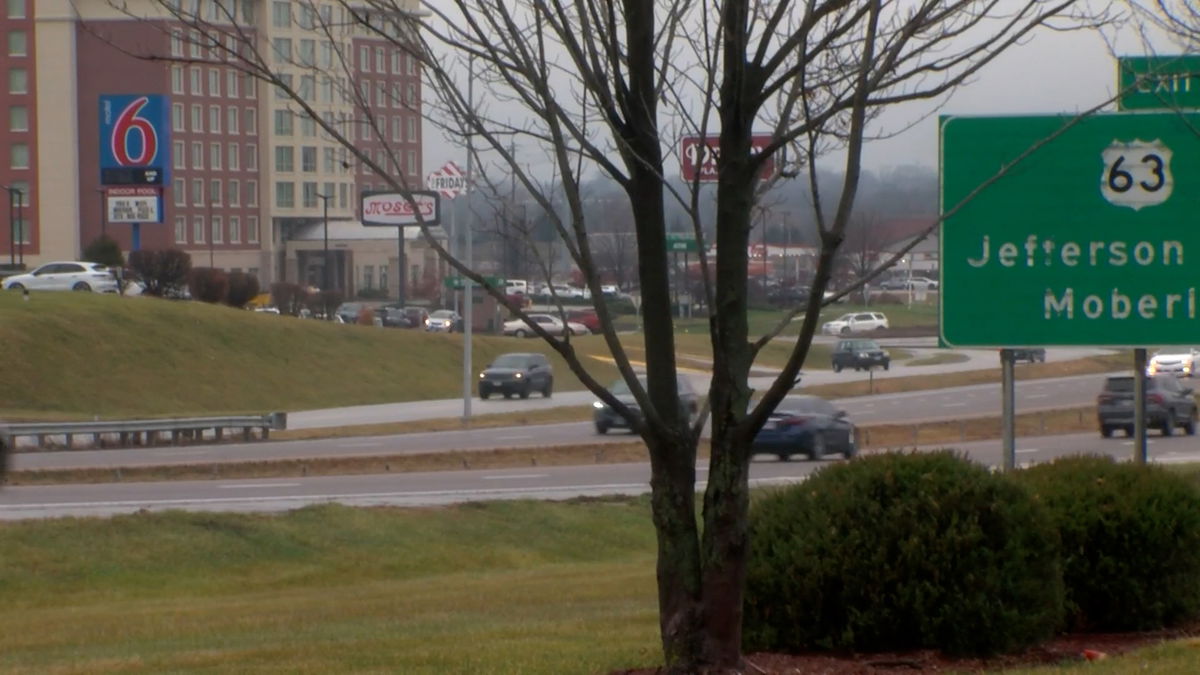Bussiness
Branding a tradition for families in Nebraska’s cow business

BROKEN BOW, Neb. (Flatwater Free Press) – As the five horseback riders disappeared behind a pasture hill on a blustery late April morning, a meadowlark sang in the rustling tall grass. An hour later, the riders reappeared in the distance, their “yips” and “hey, hey, heys” directing a herd of Angus cows and tag-a-long calves.
The herd moved through a gate, across a mud puddle and toward a pasture prepped for branding day. It’s a springtime tradition at the Treffer Ranch and other ranches responsible for one of Nebraska’s most valuable commodities: cattle.
But the branding on this Saturday was nothing like a rodeo or scenes in cowboy movies and old westerns. A real branding day is more like an understanding – a slow dance between humans, ranch horses and cattle.
That doesn’t mean all participants were always happy. The calves started bawling when the Treffer crew sorted them into a pen while their moms went into a nearby corral.
The Treffers’ branding day traditionally is the last Saturday in April, weather permitting, with family members making up all or most of the crew.
It typically requires two or three ropers, three pairs of calf wrestlers and three or four people giving vaccinations, according to brothers and ranch owners Bruce and Mike Treffer. Bruce applied the brands, a job his dad, Loren, handled for decades until his death in January 2018.
Several regular crew members – sons, nephews and Mike’s wife Corlyus – who help brand or wrestle roped calves to the ground couldn’t come this year.
“We’re kind of short, especially of the big guys in the family,” Mike said.
So Bruce’s twins Greg and Sarah, sophomores at the University of Nebraska-Lincoln, recruited four college friends with different cattle handling experience to help. They were quick learners and better calf wrestlers by the end of the day.
“If you get folks who don’t know how to wrestle a calf, it can be a wreck,” Mike said about handling 85 calves mostly weighing 90-200 pounds.
Mike and two nephews rode their horses into the pen, roped the calves’ back legs and slid them across the grass on their stomachs to the wrestlers.
Some people think this “rope and drag method” hurts the calves, Bruce said, but “it’s easier on them and the people than using the chute.”
Bruce applied the family brand on each calf’s left side ribs. Then came the shots and sprays.
The whole process took a minute or two for most calves, who then jumped up and searched for mom. Some were mostly interested in a milk meal.
“I don’t think we’re doing this just for the fun of branding day,” Bruce said. “It’s stuff that has to be done.”
Why brand?
Brands have been used to prove cattle ownership since farmers and ranchers first settled Nebraska’s vast, unfenced prairie, and cattle drives brought large mixed-ownership herds to Ogallala and other railroad towns.
Recorded brands totaled 1,590 in 1890, according to a legislative policy brief. Brand inspection of cattle and horses sold in Nebraska started in 1909. In 1941 lawmakers established the brand inspection area and Nebraska Brand Committee in an attempt to prevent theft.
Committee inspectors confirm brands and ownership when most cattle are sold. In 2022-23, the self-funded agency inspected more than 3.8 million cattle, according to an annual report.
Branding is voluntary. Some cattle outside the designated brand area – roughly the western two-thirds of Nebraska – are branded and some within the area aren’t. But to use a brand it must be registered with the Brand Committee.
“Not everybody brands. It’s the owner’s prerogative,” said Marie Farr, a southwest Nebraska rancher and one of five committee members appointed by the governor and approved by the Legislature.
Branding days are among rural Nebraska traditions.
“We rely on each other in times of need and celebrate together during the good times,” said Nebraska Agriculture Director Sherry Vinton, whose ranching roots in western Nebraska stretch back nearly 150 years. “Whether there’s a branding, prairie fire or graduation, neighbors show up to help.”
Some of Nebraska’s 33,000 registered brands have been used for generations. Some families have several.
The main Treffer Ranch brand is the upside down T over a lazy T that falls to the right.
Farr said brands remain valuable because, unlike ear tags that can fall off, they are permanent and can be seen from a distance.
And that matters because cattle are big business in Nebraska. The state Department of Agriculture reported that cattle and calves ranked as Nebraska’s No. 1 most valuable ag commodity in 2022. The state led the nation in beef and veal exports in 2023 (nearly $1.8 billion).
The 1,150 missing cattle that were recovered in 2022-23 were valued at more than $1.2 million, according to the Nebraska Brand Committee.
Family history
Today, the Treffer Ranch has 1,300 acres in southern Custer County and includes some cropland along with a herd of roughly 250 cattle and about two dozen horses – a modest-sized operation with humble origins.
Loren Treffer and Delores Dethlefs were Sherman County neighbors before they married on June 9, 1952, while still in their teens.
“We grew up on farms with cattle, pigs, chickens and some sheep,” Delores said. “My dad always had a horse. Loren’s family were mechanical people.”
They moved around for the first 20 years for Loren’s jobs, mostly at Nebraska gas stations and car dealerships, before eventually settling in the Broken Bow area.
“Our kids were growing and in 4-H and wanted animals,” Delores said about living on rural properties over the years. “So we had animals.”
The registered Angus herd started in 1957 with a heifer purchased for $100 – Bruce’s and Mike’s birthday money, and $12 from their parents. That heifer was part of Grandpa Dethlefs’ herd until the Treffers had their own pasture land.
“I don’t remember making the decision to buy the heifer,” said Bruce, who was 4 at the time.
The family bought its first registered American Quarter Horse mare in 1967. Two paint horses were added in 1987, when Bruce married those horses’ owner, Christy.
At age 90, Delores still lives on the ranch headquarters east of Broken Bow. And she still uses a Dremel tool to carve ID numbers and calf birth date into each orange ear tag worn by calves for identification and ranch recordkeeping.
The family business focuses on breeding and selling registered Angus bulls and heifers to other producers. About 20 of the recently branded calves will be sold as yearling bulls next year. Some heifers will be sold and steers will be finished as beef in feed yards or at home.
The family also has welcomed up to 10 foals per year, and currently has 30 horses.
“We sell them however we can,” Bruce said. “We (he and Mike) used to break ‘em, but we got old, I guess, or slowed down. If you can’t do it yourself, it’s hard to find someone else to do them.”
“We look for good dispositions and cow sense, which is kind of built in,” Mike said about what makes good ranch horses.
The five Treffer children followed their dad’s example of mixing full-time professions with ties to the ranch, raising families and other interests.
The oldest four are retired: Bruce, of Lexington, is a former UNL Extension educator in Dawson County; Mike, from Gering, was the Box Butte County executive director for USDA’s Farm Service Agency; Linda Smith, who lives in Ceresco, worked as an IT project manager for Duncan Aviation in Lincoln; and Dawn Wheeler taught elementary school in North Platte.
Jan Thompson of Overton is an English lecturer at the University of Nebraska at Kearney.
It’s a blessing
The best tradition for many branding day veterans is the hot, homemade, help-yourself dinner served around noon. Delores said her favorite part is “the family getting together and working together.”
Baked steak was featured on her menu when she was chief cook. Everyone still brings something for the meal that’s now planned by her daughters and daughters-in-law.
On April 27, the Treffer branding crew left their muddy boots outside the kitchen door before filling plates with sloppy Joes, cheesy potatoes, baked beans, green beans, four kinds of salad and at least that many desserts.
As the college kids found seats at the kitchen table and older folks in their stocking feet stood in the adjacent dining room, Bruce asked everyone to pause for a blessing.
“Thank you for this food and those who prepared it. Thank you for our family and friends gathered here. And for letting us be in this cow business.”
The Flatwater Free Press is Nebraska’s first independent, nonprofit newsroom focused on investigations and feature stories that matter.
Click here to subscribe to our 10/11 NOW daily digest and breaking news alerts delivered straight to your email inbox.
Copyright 2024 KOLN. All rights reserved.









